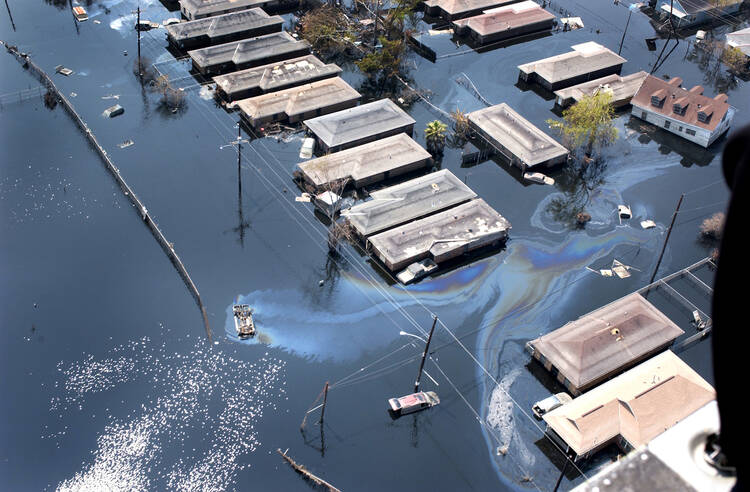On Aug. 29, 2005, Hurricane Katrina buried one of the world’s most iconic cities in a flood of biblical proportions. More than 1,800 people lost their lives. “It was like a war zone. No sign of life,” said the now-retired archbishop of New Orleans, Alfred C. Hughes. Across the region, 200,000 homes were destroyed or heavily damaged. Dozens of public, private and Catholic schools closed forever. But in the midst of the devastation, the Catholic Church jump-started the city’s initial recovery by opening up as many Catholic schools as quickly as possible. These schools accepted all students, including those who had attended public schools, and did not charge tuition. The current archbishop of New Orleans, Gregory M. Aymond, who came back to his hometown as archbishop in 2009, sees God’s blessings everywhere he looks: “He was walking in the floodwaters. He was in the attic. He was in the Superdome. [H]e didn’t abandon us.” Speaking on “America This Week” on Aug. 26, Mayor Mitch Landrieu of New Orleans said the city “is a great story of resurrection and redemption...of people coming together to help each other out.” He commends the “tremendous progress” the city has made, but adds that there is still “a long way to go.”
Ten Years After Katrina
Show Comments (
)
Comments are automatically closed two weeks after an article's initial publication. See our comments policy for more.
The latest from america
What is happening to migrants in courtrooms across the country is a complete embarrassment to the justice system and an affront to human dignity.
Being a kid in the summer is all about existing in an eternal present moment, a feeling of freedom and potential that it will never go away.
Father Thomas Hennen, vicar general of the Diocese of Davenport, Iowa, has been appointed Bishop of Baker, Oregon.
My writing during these past five years is filled with memories of my long journey with God over a lifetime; but very significantly, it is the expression of my prayer at this later time of my life.








